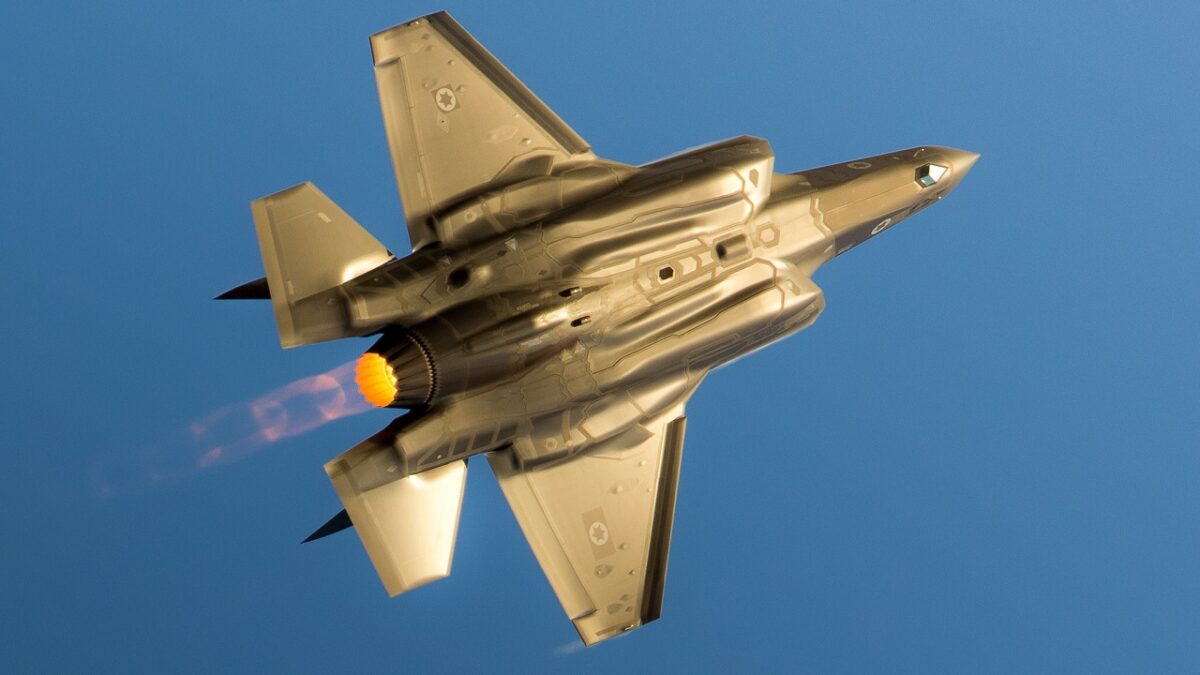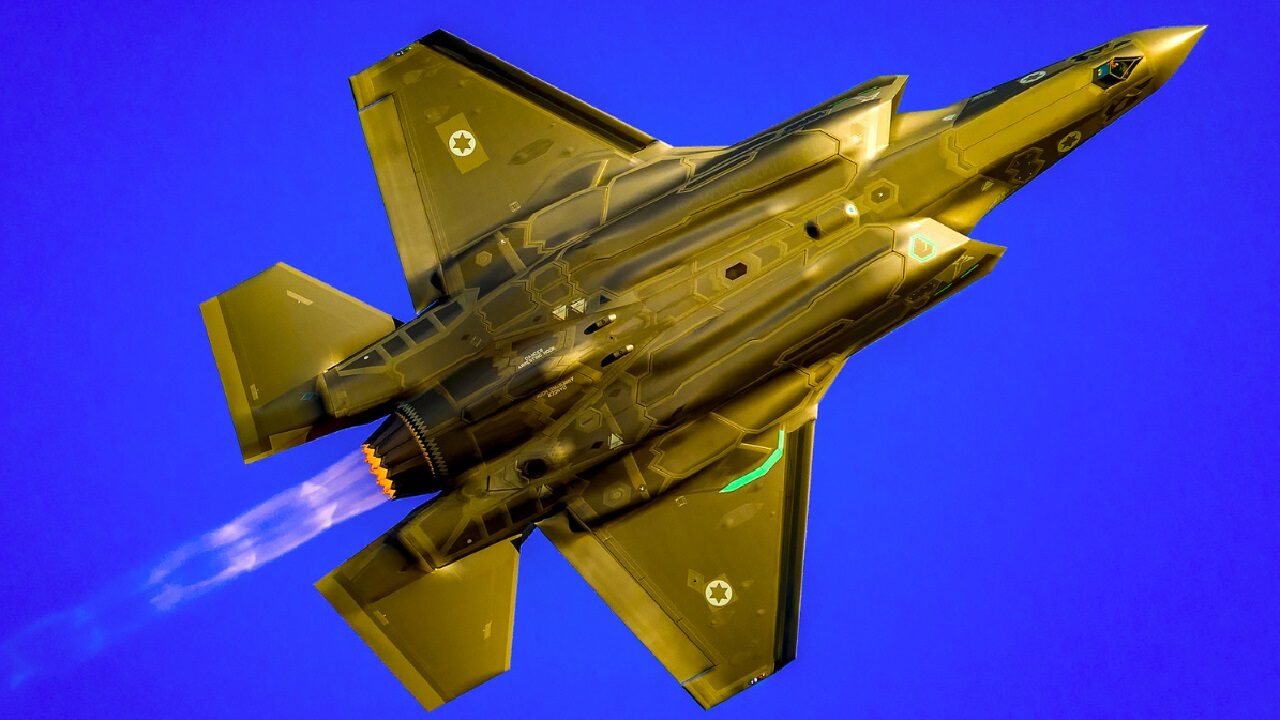Israel has ramped up attacks targeting Syrian airports in an attempt to hinder Iran’s smuggling routes to its regional proxies. Tehran has increased shipments of military equipment and weapons to its allies in Lebanon and Syria vis-à-vis these aerial routes- making it a critical concern for Israel’s Defense Forces (IDF). In September, the Israeli Air Force launched a strike targeting the Aleppo airport prior to the arrival of an Iranian plane. According to Reuters, the IAF damaged equipment at the airport during the strike. While the IAF’s presence in Syria is not new, the military branch’s ability to carry out aerial attacks from farther distances has been recently elevated by new modifications to the F-35I Adir fighter jet. This summer, Israeli media outlets claimed that its fleet of top-of-the-line fighters now had the capability to reach targets within Iran – without the need of aerial refueling. This feat enhances Israel’s already top-tier multi-role fighter.
How did Israel acquire the F-35I Adir?
Israel became the first foreign customer to procure the U.S.-made F-35 Lightning II back in 2010, when the airframe’s nine-nation co-development group allowed the Jewish state to purchase a distinct variant of the fighter. While the Lockheed Martin-designed jet is highly touted as the world’s premier fifth-generation fighter, Israel’s modified F-35I Adir is equipped with highly specialized add-ons that could make it the most formidable F-35 on the planet. For the first time, Lockheed Martin agreed to produce a prototype for the IAF that would serve Israel’s unique mission sets. Initially, the IAF’s major modification to the stealth fighter was to its electronic warfare system (EWS). In addition to the incorporation of domestically produced sensors and countermeasures to the airframe, homegrown helmet-mounted displays among other data gathering and processing capabilities were included in the Adir model.
Originally, the “Mighty One’s” major flaw was range
Despite the F-35I Adir’s truly formidable add-ons, one important capability was lacking – range. Israel’s top nemesis, the Islamic Republic of Iran, is positioned over 1,000 miles away. The longer distance has made carrying out aerial and ground attacks targeting assets and personnel within Iranian territory complex. While many of Iran’s regional proxies are located closer to Israel’s borders, the regime’s nuclear program and buildup of raw-nuclear materials remain difficult to reach from Israel.
Israel’ announces a “new capability” to address the range issue
In June, Israeli news outlets reported that the IAF now possessed a new capability to fly into Iran’s territory without needing to be refueled by the country’s Boeing 707 tankers. Although these reports did not provide explanations as to how the fighters’ ranges could increase so significantly, some analysts indicated that drop tanks containing external fuel could be the culprit. The Drive inferred that while the incorporation of drop tanks could increase radar signature, they could be pushed together with their pylons prior to crossing into Iranian airspace. In addition to this new long range capability, the IAF allegedly integrated a new one-ton bomb into the Adir’s internal weapons compartment without jeopardizing its stealth radar signature. These reports were published amidst the flare up of tensions between Israel and Iran, and could have been released in part to deter Tehran’s region-wide escalations.
U.S. refueling tankers will soon be in the mix
While reports suggesting that Israel’s fleet of F-35I fighters may not need aerial refueling to reach Iran have circulated, the Israeli government has maintained its desire to acquire newer U.S. tankers. In September, the IAF signed an agreement with the U.S.-based Boeing corporation to purchase four multi-mission KC-46 refueling tankers– a deal valued at around $930 million. According to The Jerusalem Post, “The much newer KC-46 has a range of 11,830 km. and can deliver almost 5,500 liters of fuel (1,200 gallons) per minute through its fly-by-wire 55-foot (almost 17-meter-long) boom. It can also attach external fuel pods on the wings to allow three jets to be refueled simultaneously, all within three to four minutes.” Additionally, “The refueler’s fuel tanks are reinforced with ballistic armor to withstand incoming fire.” Like the F-35I Adir, the KC-46 tankers could be modified by the IAF to feature an indigenously-designed EWS.

F-35I Adir. Image Credit: Creative Commons.
Israel won’t procure the KC-46 refueling tankers until 2025, but that probably won’t hinder the IAF’s aerial operations in and around Iran’s borders. In August, Saudi media outlet Elaph claimed that F-35I Adir fighters penetrated Iran’s airspace various times over the summer. As Iran’s proximity to acquiring a nuclear weapon looms closer, prospects for more frequent aerial attacks carried out by F-35I Adir fighters appears more probable.
Maya Carlin is a Middle East Defense Editor with 19FortyFive. She is also an analyst with the Center for Security Policy and a former Anna Sobol Levy Fellow at IDC Herzliya in Israel. She has bylines in many publications, including The National Interest, Jerusalem Post, and Times of Israel.

